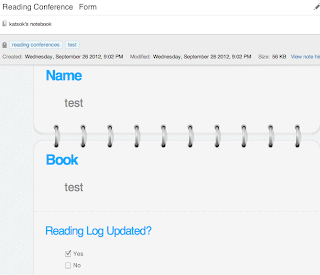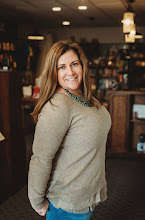Upon
finishing there was so much I wanted to ask Franki about this book, and so many
days left until NCTE, so she kindly agreed to an interview. Hope her answers
will inspire you as they did me. And I highly recommend her new book. An
excellent addition to your professional development library.
Where did the seeds for this book originate?
Well,
when I left my classroom and went into a position as a school librarian, I did
a lot of work with teachers, choosing books for lessons, units, etc. I had
never really thought about the process of my planning until I had the
opportunity to work with so many other teachers. I also never had the time to
really think about the ways in which books and resources scaffold students in
different ways. As a librarian, I often read a book over and over to different
groups of children. Some books naturally invited certain kinds of conversations
with children. So, this book is kind of a reflective journey of my planning
process. I had done other work on deciding what to teach but this one really
focused on the process that comes after that decision and what I discovered
about how to get children from where they are to where we want them to be as
readers.
If you were speaking to a new teacher, what advice would you
give them in regard to planning?
I think
planning has to be about thinking about your children first. We have to know
where are students are and where we hope to take them as readers. Once we know
that, they it is about planning a very flexible journey. My other piece of
advice would be to overplan and then to be okay with not getting to everything.
What I’ve learned is that when I overplan, I am able to be really flexible each
day with where I go next based on how students respond. When I overplan, I have
more books and ideas than I need and I can pick and choose from this menu as we
move along. For years. I overplanned and then became frustrated that I couldn’t
get to anything. Now, I understand that the planning process is a way for me to
understand where I am going and to think through what support students might
need to get there. Then I get started, knowing I won’t follow the exact plan I
created.
I like how your digital reading life has made such an impression
that you share it with your students. What do you feel that teachers must share
about digital reading with their students?
I am
all about authenticity and I realized this year that when I share my reading
and writing lives with students, I can’t possibly be honest without including
the digital piece of that. So much of my reading life is the same but so
much is different over the last few years. For me, it is about really sitting
down before I do any minilesson work in which I share my own life as a reader
and being really honest. I have to really think through my reading—how much of
it is actual books, how much I read on my Kindle, how much time I spend reading
blogs. So, if teachers have a piece of their reading life that is digital, I
feel like that has to be part of our teaching in order to keep it authentic and
grounded.
When you sit down to plan, do you plan out the next cycle only
or do you have a rough sketch for the semester?
I have
a sketch that never works out. I think I know where I am going for the year,
then I meet the kids. And usually, they are not where I plan for them to be so
I need to revamp. I wouldn’t say I have a rough sketch in a calendar, but I do
have thoughts about which cycles I am pretty sure will be included each year. I
know I want to teach kids to support their thinking with evidence from the
text. I know I will want to do lots with nonfiction. Theme is usually
important. But I am never sure where those will fit into the year until I see
where kids come in to the classroom. I try to start with the thing that
will move them forward fastest and then build from there. So, I have a list
maybe, rather than a calendar and even the list changes.
What do you feel is most often overlooked in regard to planning?
I think
the small scaffolds are critical and often, when we don’t plan big picture, we
miss those. The things we are teaching kids as readers are very complex and
without breaking them down for ourselves, it is hard to break them down for
students. For me, when I am in a hurry or don’t have the time to put into
planning that I need, I tend to plan without this careful attention to the
scaffolds that will take kids forward in small steps.
I think that planning has gotten such a bad rap by teachers and
I love how you seem to look forward to it. What is your number one
recommendation to help teachers make this switch in attitudes?
I think
this is really an issue of time. So much is demanded of teachers today that
planning often takes a back seat. I like to plan when I have time to plan and
to plan well. I need time to sit at the bookstore or library and find the right
resources. I need time to spread out at my kitchen table and think through the
whole of it. Without giving ourselves time to plan well, it is no fun. A
good 2 hour block gets me to feel really good about my work but anything less
than that is hard. So I think it is about not trying to plan in 30 minute
chunks but to really give ourselves time to plan well if we are to enjoy it.
With Common Core becoming so important in our planning, I was
glad to see that you had a balance of non-fiction and fiction lessons. I think
many people see the need to increase our readings of non-fiction texts but I
believe fiction will still have its place. After studying the standards, what
do you feel we need to be aware of?
I feel
like the nonfiction piece is really telling us that we need more reading and
writing across the day. We need to embed literacy in our science and math
classrooms. So I don’t think more nonfiction means taking time away from
fiction. Instead I think the Common Core standards give students the
opportunity to read and write for a variety of purposes across the school day.
Colby Sharp tweeted yesterday that reading your book may be
expensive – he wants to read every book you mentioned. I had the same problem
as I read it this week, so I’m going to ask you the impossible question. If you
had to grab five picture books before your collection was lost in a fire – what
would those five be and why?
Hah!
I have old favorites but I tend to love my newest books most. I love falling in
love with new books and I am tempted to tell you about the ones I used this
week with kids. However, I guess if I had to choose 7 books (5 is impossible!),
books that kids have learned from over and over again in minilesson work (and I
am going to stick with picture books), it would be the following. I think
these books (along with a ton of others) have lots of possibilities. They
invite lots of conversations naturally and kids can grow so much as readers.
How to
Heal a Broken Wing by Bob Graham
City
Dog, Country Frog by Mo Willems
The
Summer My Father Was Ten by Pat Brisson
Walk
On! By Marla Frazee
Emma’s
Rug by Allen Say
Twilight
Comes Twice by Ralph Fletcher
The
Other Side by Jacqueline Woodson
Note from
Katherine: See what I mean? Now there are even more books I NEED to purchase!
Franki, thanks for letting me interview you!
















